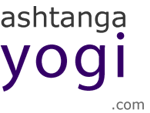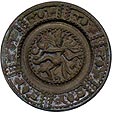
| HOME | MENU | EMAIL |  |
| articles / letters |
Prana & Bandhas with David Williams by Cara Jepsen
People
are trying to complicate yoga. I’m here to simplify it, said David
Williams at his recent intensive at Priya Yoga. It was the first Chicago
workshop for the Maui-based teacher, who’s been
Practicing Ashtanga since 1973 and has passed on his knowledge to a who’s-who
of senior Ashtanga Vinyasa teachers, including Chuck Miller, Maty Ezraty,
Tim Miller, Danny Paradise, David and Doug Swenson and the Kest brothers.
Throughout the workshop, David, who doesn’t give manual adjustments,
reminded us to focus on moolha bandha (the root lock), breath and increasing
our mental concentration rather than forcing ourselves into picture-perfect
postures.
‘If
it hurts, you’re doing it wrong,’ he explained in his soft
Southern drawl. ‘All this talk about openings is misleading and
has the potential of leading to damage. Anything beyond stretching is
tearing. I have yet to find any benefit from tearing oneself or being
torn by others.
‘The purpose of yoga postures is to get yourself to basic wellness so your body is not an obstacle to meditation.’
The most
powerful yoga David ever saw was in an 1939 film of Tirumalai Krishnamacharya
(the teacher of Pattabhi Jois, Indra Devi, B.K.S. Iyengar and T.K.V. Desikachar).
The venerable teacher was ‘as stiff as a board,’ he said.
‘But the power of his practice came through with his moolha bandha,
breath control and focus.’ After seeing Krishnamacharya’s
practice, David became more focused on increasing his core strength. He
realized that ‘what’s important is what’s
invisible.’
David started
practicing yoga while a student at the University of North Carolina. ‘I
was fascinated with yoga,’ he said. ‘So, after graduation,
I dropped everything and went to India’ in the summer of
1971. After visiting several ashrams, he and fellow Hawaii-based teacher
Norman Allen saw Manju Jois and a friend demonstrating Ashtanga’s
primary series at an ashram in South India. Enchanted,
they asked Manju if his father and teacher, Pattabhi Jois, would take
them on as students. Manju said he didn’t know. David’s visa
was about to expire, so he went home while Norman went to Mysore and persuaded
Guruji to teach him. A few months later, David returned with Nancy Gilgoff,
who also teaches in Maui. In those days, there was very little conversation
with Guruji, who didn’t speak English. David learned by watching
Guruji’s Indian students. ‘It was monkey-see, monkey-do,’
he said. ‘My goal was to learn eight postures a day’ and over
the next four months he learned first and second series, half of third
and pranayama.
In 1975
he and Nancy Gilgoff brought Guruji and Manju to Encinitas, California
for four months. David continued studying with Pattabhi Jois until he
learned the complete Ashtanga yoga system. ‘Pattabhi Jois saw we
were serious,’ he says. ‘Every teacher wants a student who
can run with the ball. And I wanted to learn the whole thing in
order to keep it alive and pass it on.’
After learning
the Ashtanga yoga system, David moved to Hana, the most remote part of
Maui, to get strong and centered in his yoga practice. One big revelation
David had was that he should stop trying to imitate the pictures of B.K.S.
Iyengar in Light on Yoga and start getting in touch with his own experience.
‘It
was a relief to stop trying to be someone else.’ About seven years
ago, after 25 years of uninterrupted daily practice, he modified the first
series for his own practice, holding upward facing dog for five breaths
instead of one during the vinyasas. ‘I felt like Christopher Columbus.
After all these years I had discovered a way to balance the primary series
[which consists of mainly forward bends].’ He explained later that
‘When I was first learning the Ashtanga yoga in India, I was told
that the series was perfect as it is and should not be modified in any
way. After several years I began hearing that it was being modified, and
quite regularly. The Ashtanga yoga series was
not a classical form but a work in progress. Based on this, I now hold
upward dog in first series for five breaths and offer this modification
for others to try.’
At the
workshop he led students through the primary and intermediate series.
On Friday night he showed us abdominal lifting exercises that are ‘not
a part of Ashtanga, just a part of yoga’ designed to strengthen
the abdomen, and prepare the body for nauli kriya (the practice of rotating
the abdominal muscles). After that, he explained how to do moolha bandha
and coordinate it with the breathing. Continuous focus on moolha bandha
is what makes this a moving meditation
instead of calisthenics,’ he said. ‘Your mantra is the moolha
bandha.’
Then he
led us through most of the primary series, telling us to drop our heads
all the way back in the first movement of sun salutation A and to do a
fluid utkatasana (uneven pose) in surya namaskar B, rather than executing
it in two parts. He repeatedly reminded us to constantly use moolha bandha
and ‘feel your ribs moving in and out, not your abdomen.’
During
the seated postures, someone asked what to do if one side is significantly
stiffer than the other. ‘Only go as far as your tighter side allows’
on both sides, he said. ‘It’s more important to have symmetry
than to do some contortion on one side.’ In response to a query
about shoulder pain, he said to back off. ‘Focus on the moolha bandha
and the breath. And don’t ever do anything to hurt yourself again
-- or let anyone else hurt you.
‘If you aren’t making your yoga practice as pleasant and energizing as possible, you’re missing an opportunity.’
On Saturday
afternoon he discussed the history of yoga and the sutras and gave us
‘the history of Ashtanga in 20 minutes’ dating back to Tirumalai
Krishnamacharya’s eight-year apprenticeship with Sri Ramamohan Brahmachari
in the early 1900’s. He then told his own story of going to India
and bringing Ashtanga to California and Hawaii. David also gave us lots
of practical advice (including drinking lots of water, because dehydration
causes stiffness). Then he reminded us to use common sense. ‘The
tortoise wins the race,’ he said.
He recalled
the words of his first yoga teacher, who said, ‘Try to be a yogi
during your practice, then after practice try to carry your aware state
into the outside world. At first this may only last ten
minutes, and then you become the same old jerk you were before. With time,
one gradually becomes more yogic more minutes and hours of the day.’
David also
told us about meeting an elderly swami on his first trip to India, who
said the first decade of yoga is pre-yoga, or ‘getting into shape
for the real yoga.’
‘Yoga
is not calisthenics. It is a path to self-realization. The asanas go very
deep, beyond the muscles and joints to reach the nervous system. It’s
a method of getting to the source of your
angst and increasing your core strength.’
‘We
want to access and release our muscle memories as part of our path to
self-realization. And if you’re flexible, you sometimes have to
dig even deeper.’
If he had
a theme, though, it was that yoga is a method of increasing prana. ‘Arguing
and things like that waste prana,’ he said. ‘Imagine you have
a bucket, and prana is slowly filling it up, drop by
drop. But if there’s an emotional conflict or an injury, the cork
pops out, it drains and you have to start all over again.
‘You cannot work on deeper healing as long you are continually being injured in your daily practice.’
HOME | PICS | BIOG | EARLY YEARS | CALENDAR | LETTER | ARTICLES | GUESTS | FORUM
Copyright 2004 David Williams
Site Last Updated: